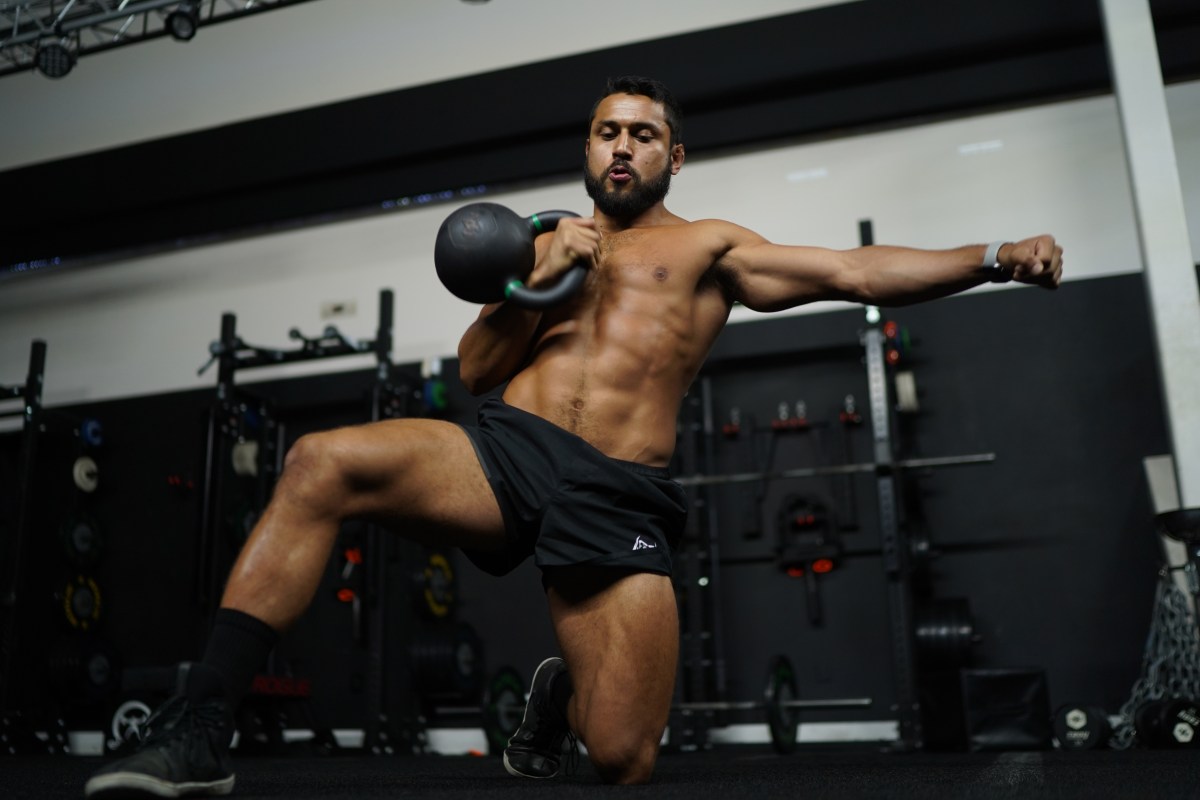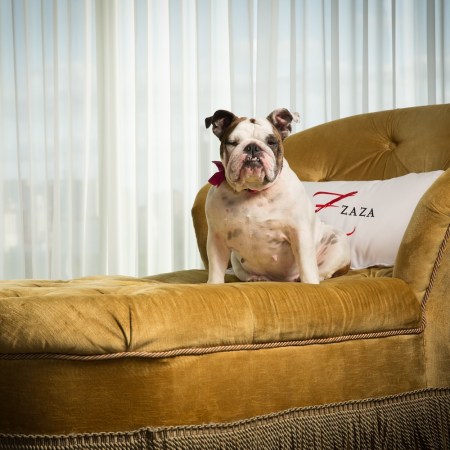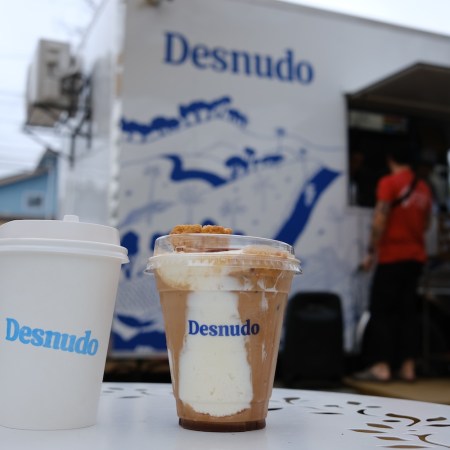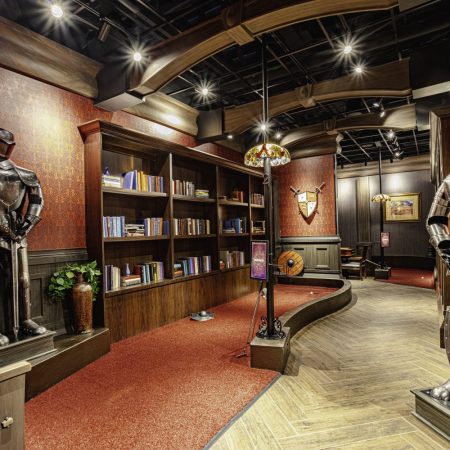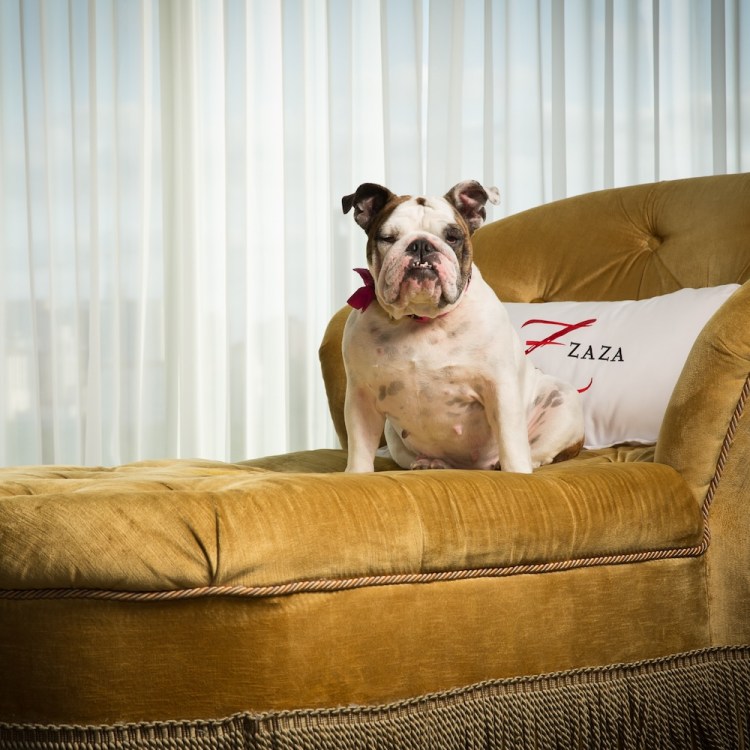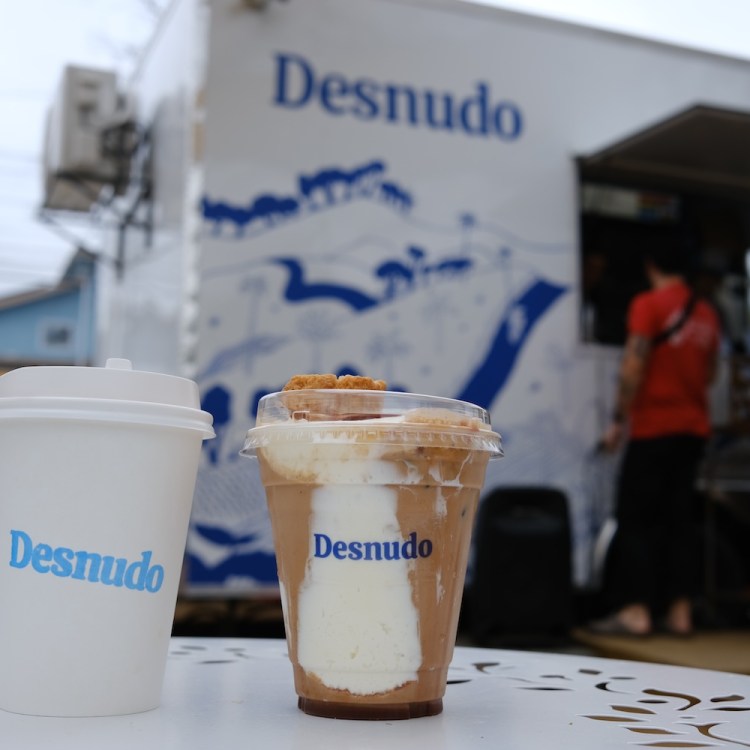Eric Leija was with UFC fighter Roger Huerta and his brother Juan Leija the first day he picked up a kettlebell. The Texas native was just a teenager at the time, with aspirations of competing professionally in mixed martial arts, and all the guys who were beating him on the mat were using bells during their workouts. It was a classic example of if you can’t KO them, join them.
“The first time I tried a snatch it felt so weird, I just didn’t understand the movement,” admits Leija. “But that only made me more committed and it wasn’t long before I was seeing some real benefits.”
Eventually the dream of a fighting career fell away, but his passion for combat sports and fitness did not. Finding a home base at the progressive Onnit Gym in Austin, he began experimenting with kettlebell flows, and sharing them with the masses on Instagram. Now his account, @primal.swoledier, has nearly a million followers, and he’s getting DMs from celebrities like Josh Brolin on his programming.
InsideHook recently sat with Leija at Onnit for insight into his personal journey of self-improvement and some training tips from a kettlebell master.
InsideHook: What was the reason you first stepped into the gym? What were you training for?
Eric Leija: My older brother Juan and I were always a bit chubby when we were kids. I remember getting poked fun of from time to time about it. I saw him start to workout with his friends and really change his body. I looked up to him of course, so it was only natural that I tried to follow in his footsteps. We have bad genetics, in the way that if I look at food, I am gaining weight, which meant I constantly had to work out. But I started to really take to it, and it wasn’t long before I was getting compliments from my classmates. I wasn’t just feeling better about myself though, I was just feeling plain better.
So how did you first go about the process?
I just started simply lifting weights when I was 12 years old. I remember reading the Encyclopedia of Bodybuilding from Arnold Schwarzenegger. I had borrowed it from my brother and studied it fully. That is where I got the first basic routines that I was doing. Between that and starting to run regularly, I started to lose weight pretty quickly.
What took it to the next level for you?
I think it was definitely when I first discovered mixed martial arts fighting and the UFC. I was in awe of these guys who were battling out, and their ability to move powerfully. Not only did they have muscles, but they were able to use them in this practical but brutal way. That led me to start my own pursuit of the sport, and I studied jiu jitsu and boxing.
How did pursuing martial arts change what you were doing in the gym?
In the ring and on the mat I was getting beat up pretty bad. I had spent all of this time in the gym, but always doing those very basic, one-dimensional exercises. I had muscles, but they were only used in these very specific ways. That is when I noticed that the successful fighters around me, like my friend Roger Huerta, found ways to challenge their bodies in a more fluid way. There is nothing wrong with benchpresses, squats and deadlifts, but when you want to throw around another person, you need more flexibility than those provide.
They were using these different tools. I tried them all and was specifically drawn to the kettlebell. I was surprised how much I took to it early on, because at the time I only really was familiar with the small, plastic ones that you would see old ladies use. But these were completely different and opened up a whole new kind of workout. I started to see real improvement in my overall strength, and it translated directly into what I was doing with combat sports.
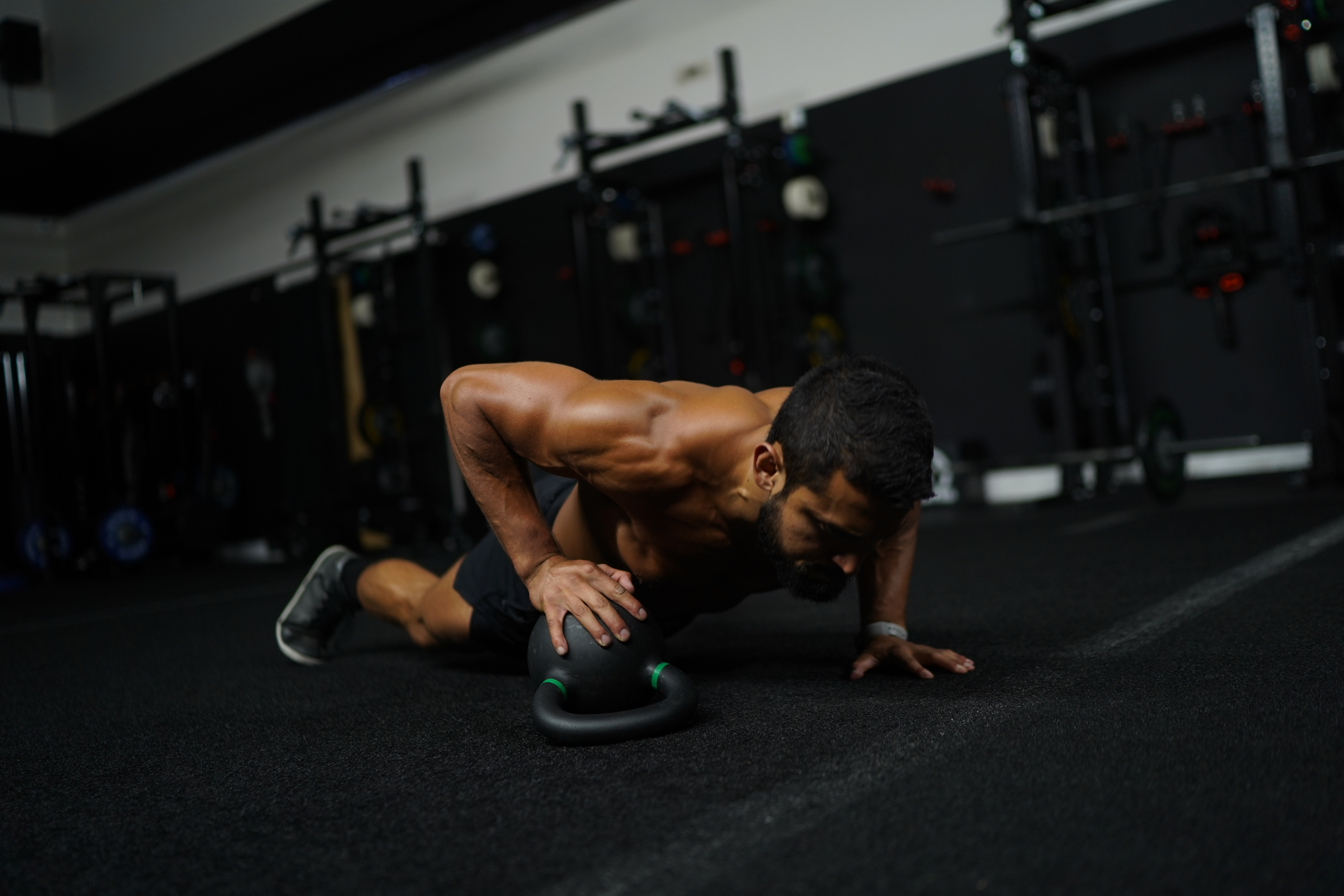
What do you find to be the hardest kettlebell move to master?
The Turkish get-up was probably the most difficult move to master, at least for me. It is so important to get all of the different elements just perfect, and to put them all together in a flow can be really challenging at first. I have found that the key to learning it is doing the full flow without the kettlebell initially, so that you can perfect the transitions. Once you master the sequence, you can add that additional load.
One of the issues that people have with the Turkish get-up is how much overhead mobility that it requires to hold the bell over your head. I personally have that issue sometimes because I like to do a lot of pull-ups and a lot of back training, which leads my shoulders to be pretty tight. That means it can be harder to keep that overhead movement.
I have learned not to force my arm into a full lockout position if I am feeling like I don’t have it. I will soften the elbow, and find ways to make up that stability where I can. I actually worked my way up to doing a Turkish get-up with a girl that used to work here at Onnit and weighed somewhere around 125 pounds. That was awesome to pull off, but I wouldn’t try to do anything like that today. That was a feat for a younger man.
Do you have any hacks for the more basic kettlebell movements?
I would say one of my favorite teachings for beginners is around the snatch. I find that people just starting out usually have an issue during the catching part of the snatch, where the bell will arc around the hand and slam into the forearm, causing a lot of pain. There is a an art to catching the bell when you are doing snatches, but it takes time awhile perfect.
The usual starting position is with the kettlebell on the ground and the handle is parallel to your body. I have found that if you angle that handle towards yourself, it naturally sets your arm on this course were your arm is rotating and the bell is wrapping around your wrist into the final position, rather than slamming into it. I also like to express how important it is to have a softened grip during these movements, because I often find people will grab onto the handle with a death grip and end up tearing up their palms.
If you were giving yourself one piece of advice back when you were starting to really train with the kettlebell, what would it be?
I would tell myself to do better at moderating intensity with the kettlebell training. I used to just focus on going hard and going heavy all of the time. How quickly could I do snatches? How far could I push myself? That is what I thought real training was. I would never take rests, even when it probably would have benefited the workouts in the end. I was on the edge of burnout all of the time.
I also used to train every single day, but now I have more of a split schedule where I am taking Wednesday and part of the weekend off, and it allows your body to recovery and get that max benefit from the work that you are doing. These days I am much more attuned to what is actually sustainable and beneficial for the longterm. I am not chasing those numbers anymore. I just want to feel good, look good, and be happy.
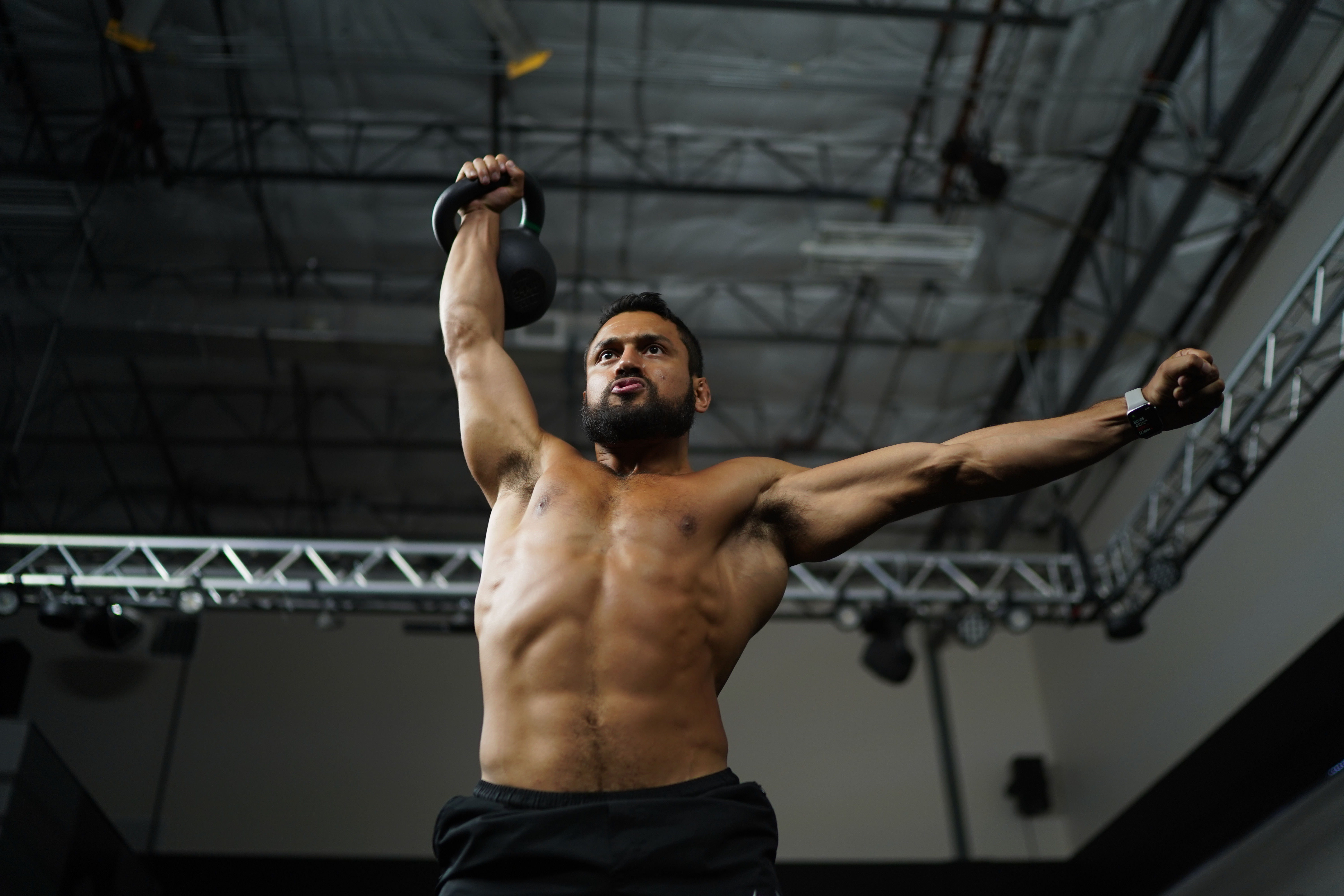
How often are you training with the kettlebells?
I use kettlebells during every single one of my sessions, but I will do kettlebell-only workouts no more than three times a week. Those days are about speed and building quick strength, doing movements like swings and snatches. I like to have a good variety in my training, incorporating those traditional lifts and cardio. I think it is important to mix it up as often as possible. On occasion I will do a month of kettlebell training only, which is a time for me to mess with different weights and intensities.
Do you think it is possible to only train with a kettlebell and see results?
I think that you can see a lot of results and gain a lot of strength using only a kettlebell. They are great for burning calories and building up your cardio. I think that you could train for a whole year, learning new things and finding new challenges. But I think there is a point where if you really want to advance in muscle mass or strength then it is necessary to incorporate other modalities. Because of the way that kettlebells are built, there is a very narrow window of weight that you can work with.
Do you take your kettlebells with you everywhere?
I love to travel with my kettlebells, and I feel like that is one of the real benefits to training with them. I recently went on a road trip to Big Bend, out in West Texas, and we were staying in a pretty simple but beautiful place. They didn’t have a workout facility or anything like that, but I had my bells and bands in my truck. Bands are a great way to ramp up the intensity when you can only bring one set. I did a little workout each morning when I was away, and they were all great. I was sore when I got back, which was a good sign. I like getting a session in, even when I am on vacation, so that I can really enjoy my food. There is some great eating in Texas.
How do you advise people to find the right weight for a kettlebell given their size?
Kettlebells come in pretty limited weights and sizes. Doing a little experimentation is always the best way, but over time I have found certain weights that work well for people generally. I will tell men that if they are under 155 pounds to start off with a 16kg kettlebell, and if they are over that, at least a 20kg kettlebell. Of course once you get more comfortable, it is time to bump it up. People don’t always understand that holding a kettlebell is a lot different than holding a dumbbell, and those weights may not always apply to what kettlebell is right for you. There is a lot less intuitive balance, which is where the challenge comes through.
I know Josh Brolin hit you up in the Instagram DMs awhile ago. Since you have grown so much on social media, do you have anyone else that you have connected with that feels a bit surreal?
My brother Juan, who brought me into the fold here at Onnit, and I are both fans of the UFC, as you know. Over the year I have gotten to know a few fighters, but one of the guys that I really admired early on was Mike Chandler. I was following him early on, and when I saw that he followed me and then was tagging me with some of his training, that was surreal. I got to train him a few years ago as well. That was a cool full circle moment for me. I am really proud of the community that I have built online and at Onnit. We aren’t stopping anytime soon.
This article was featured in the InsideHook Texas newsletter. Sign up now for more from the Lone Star State.
